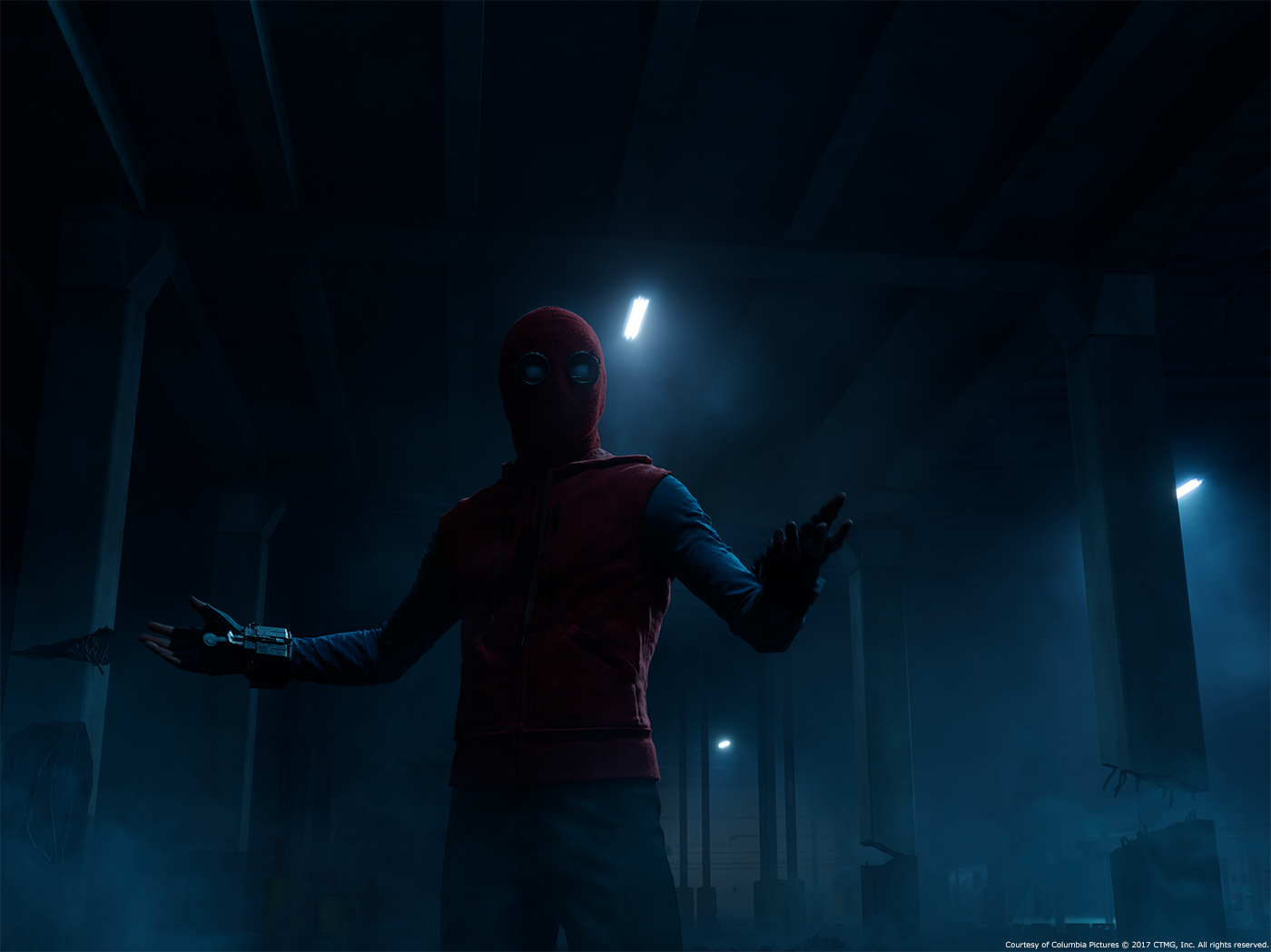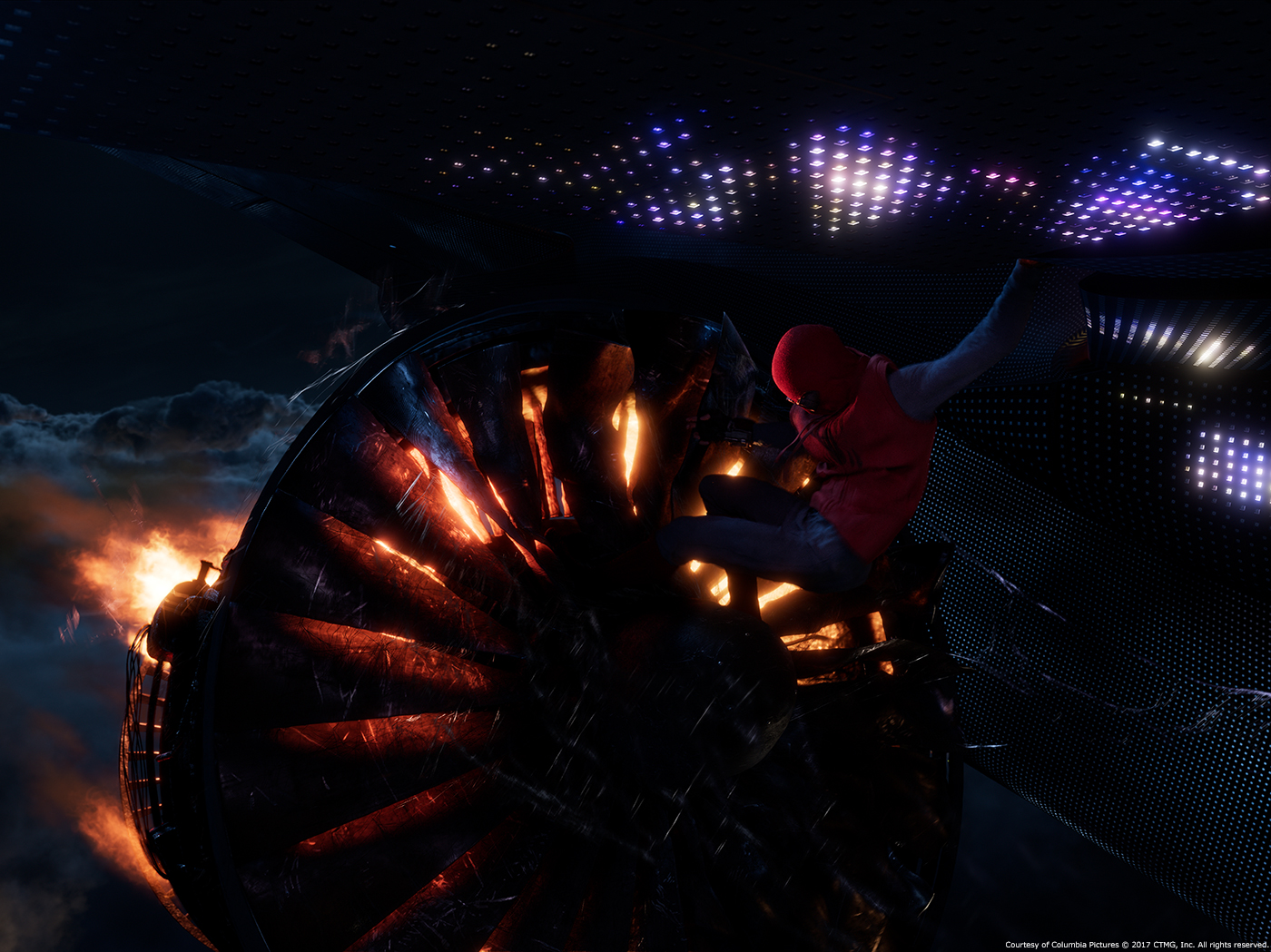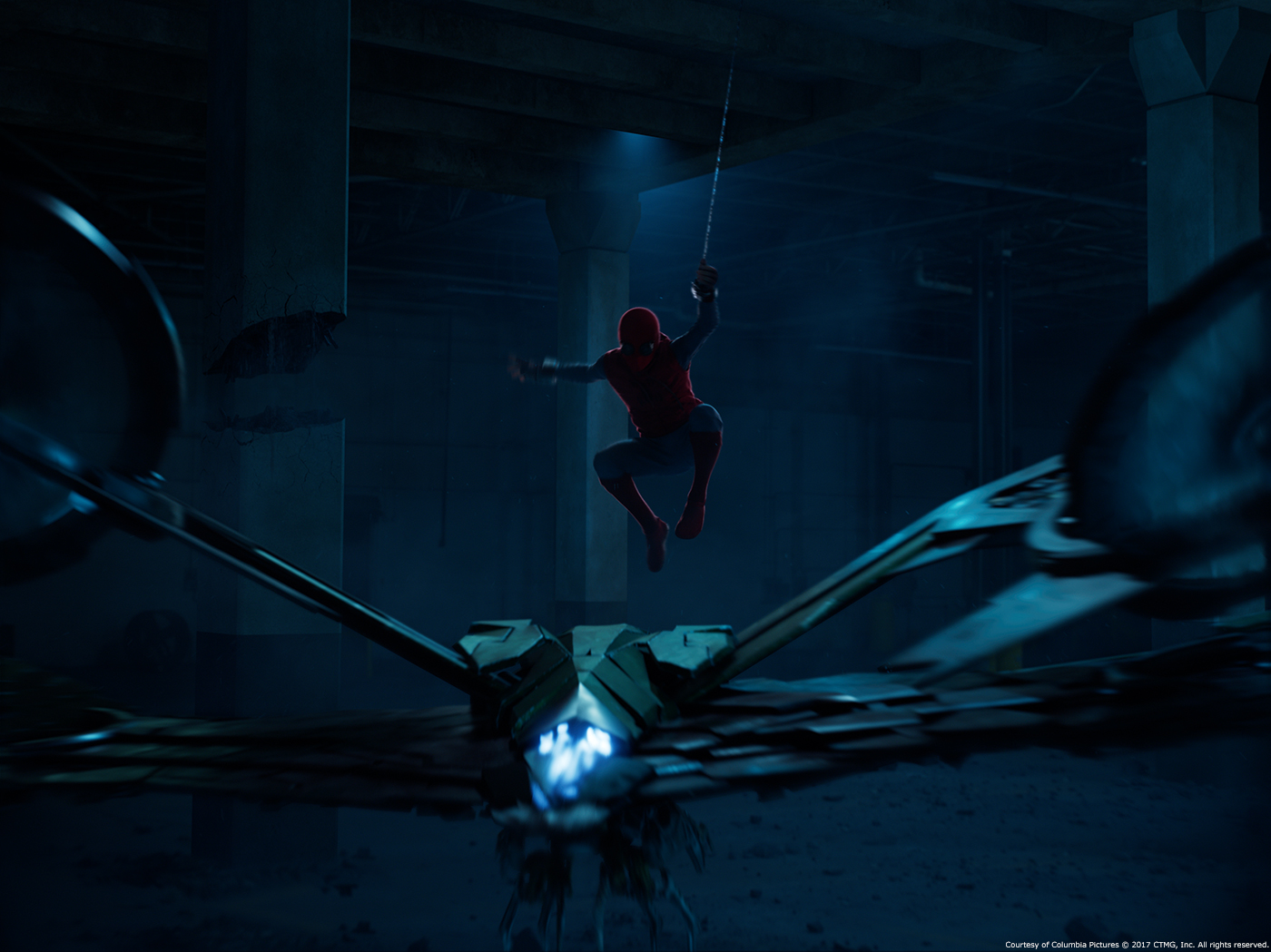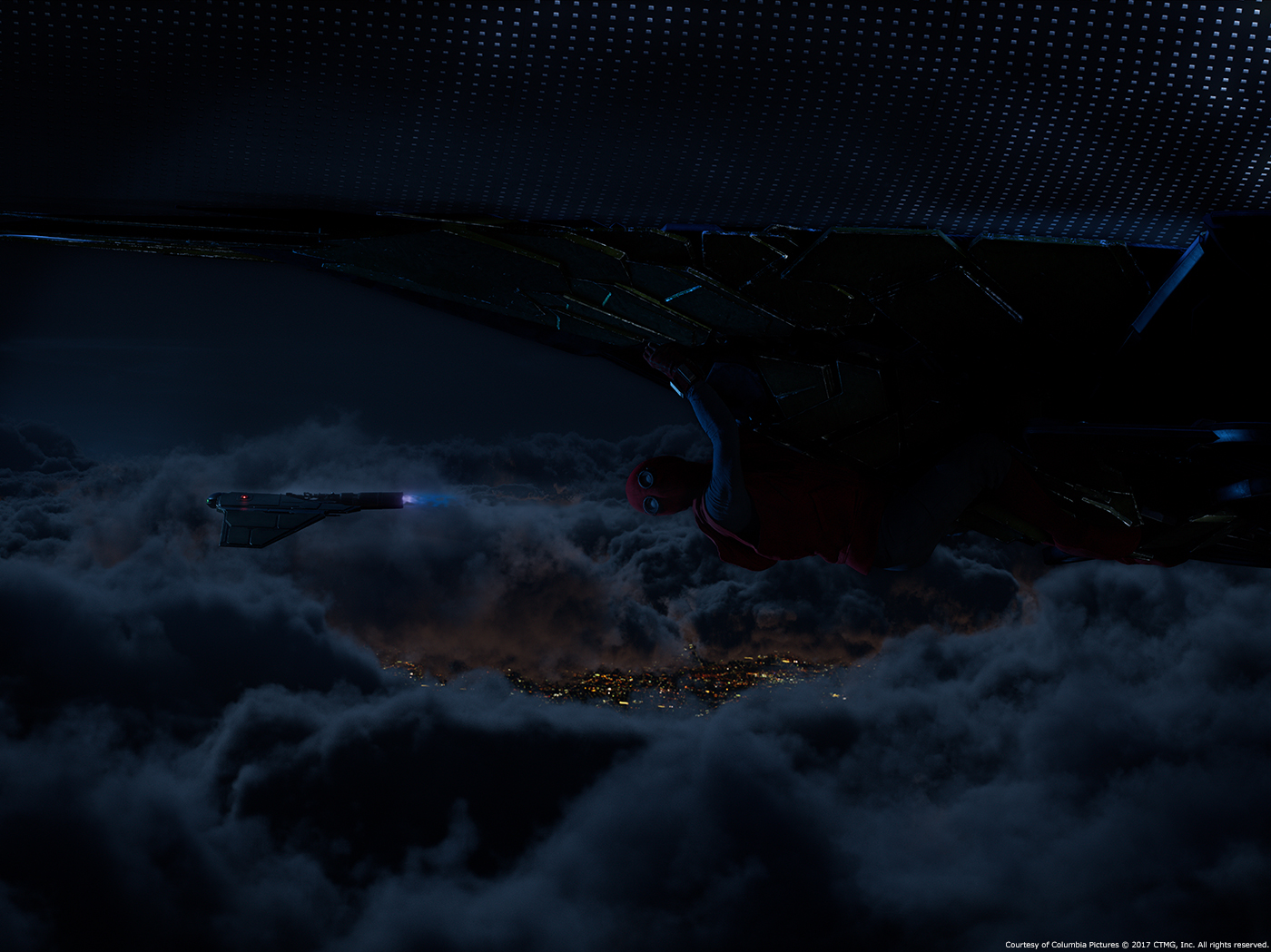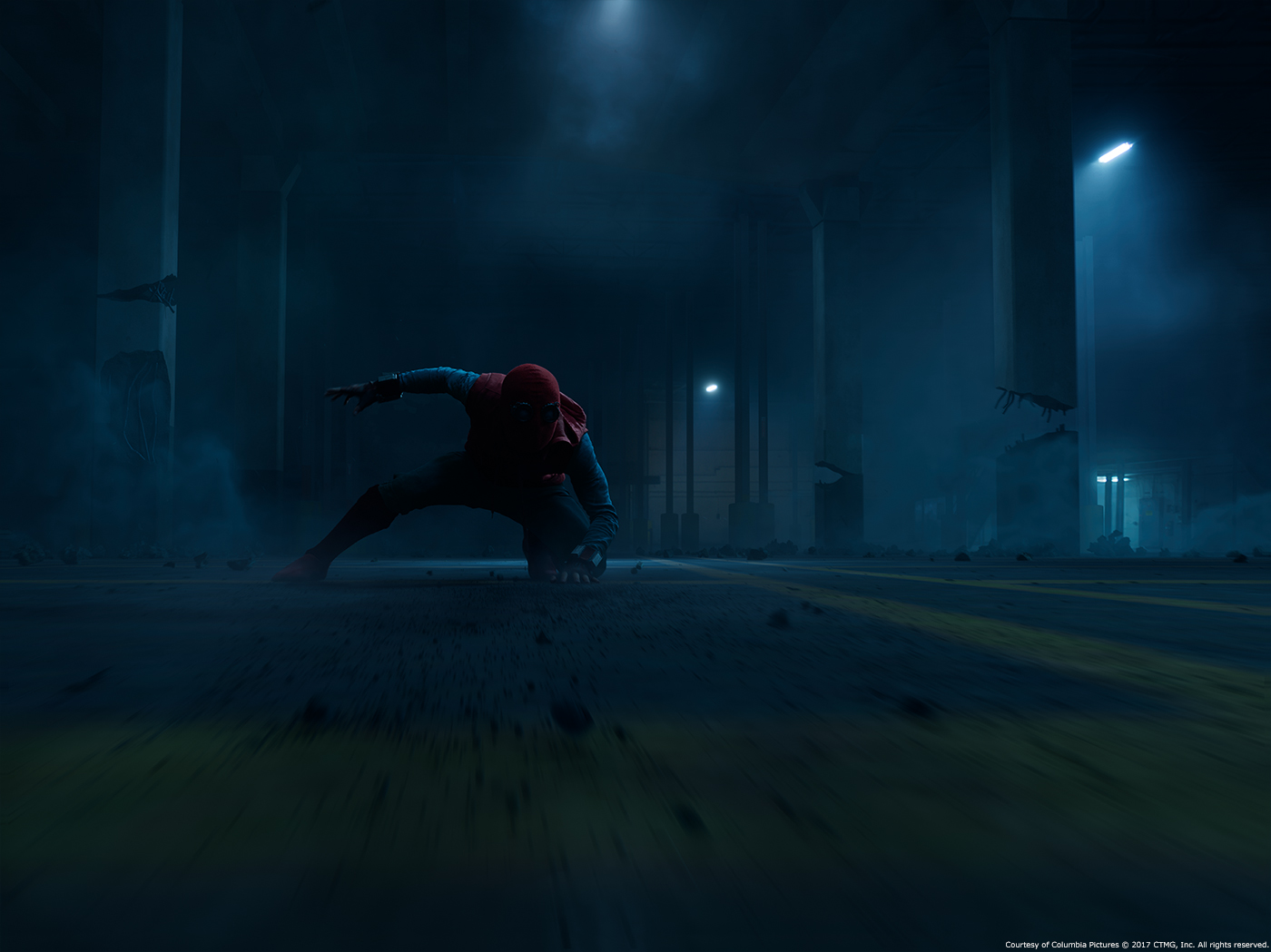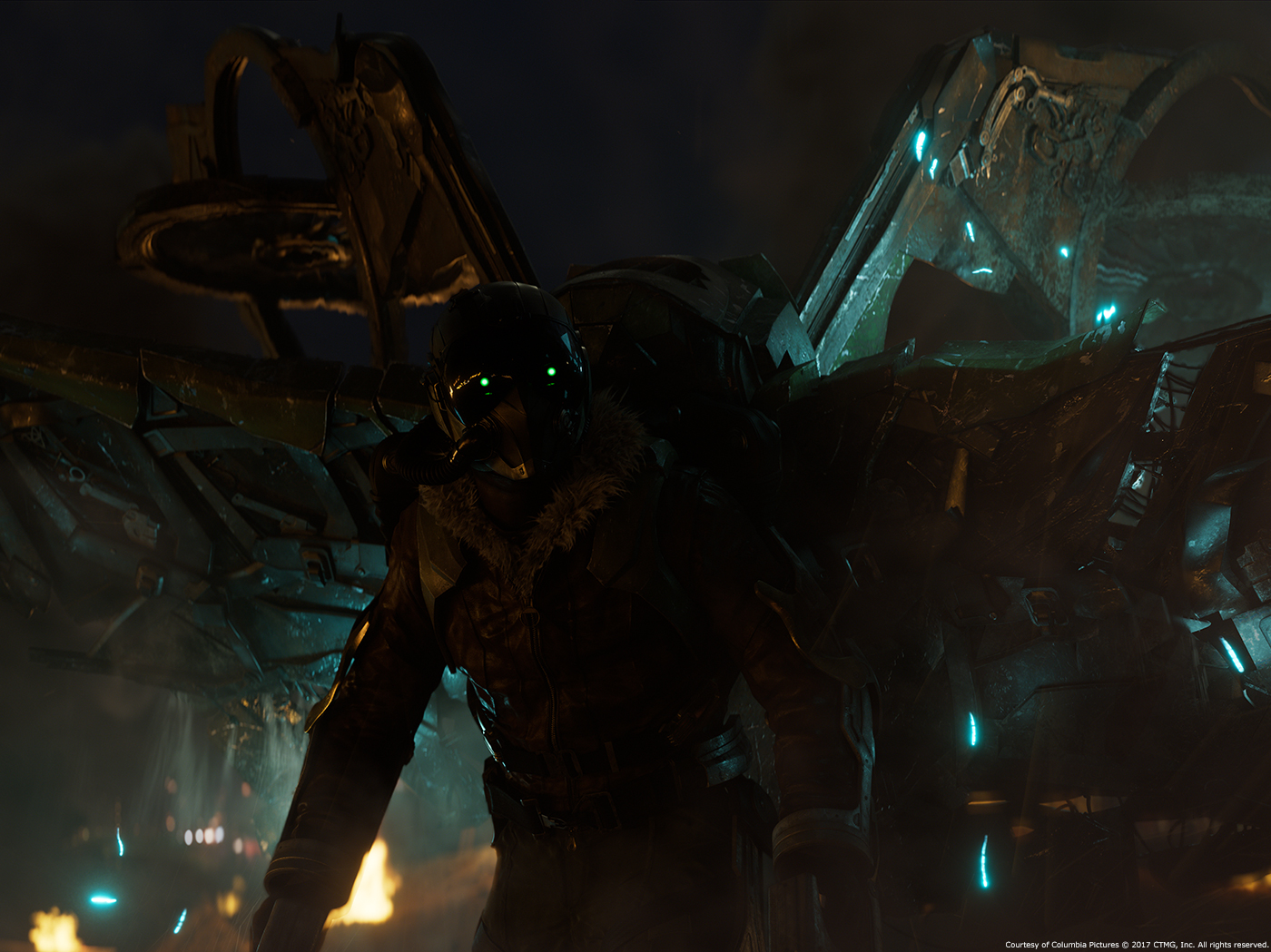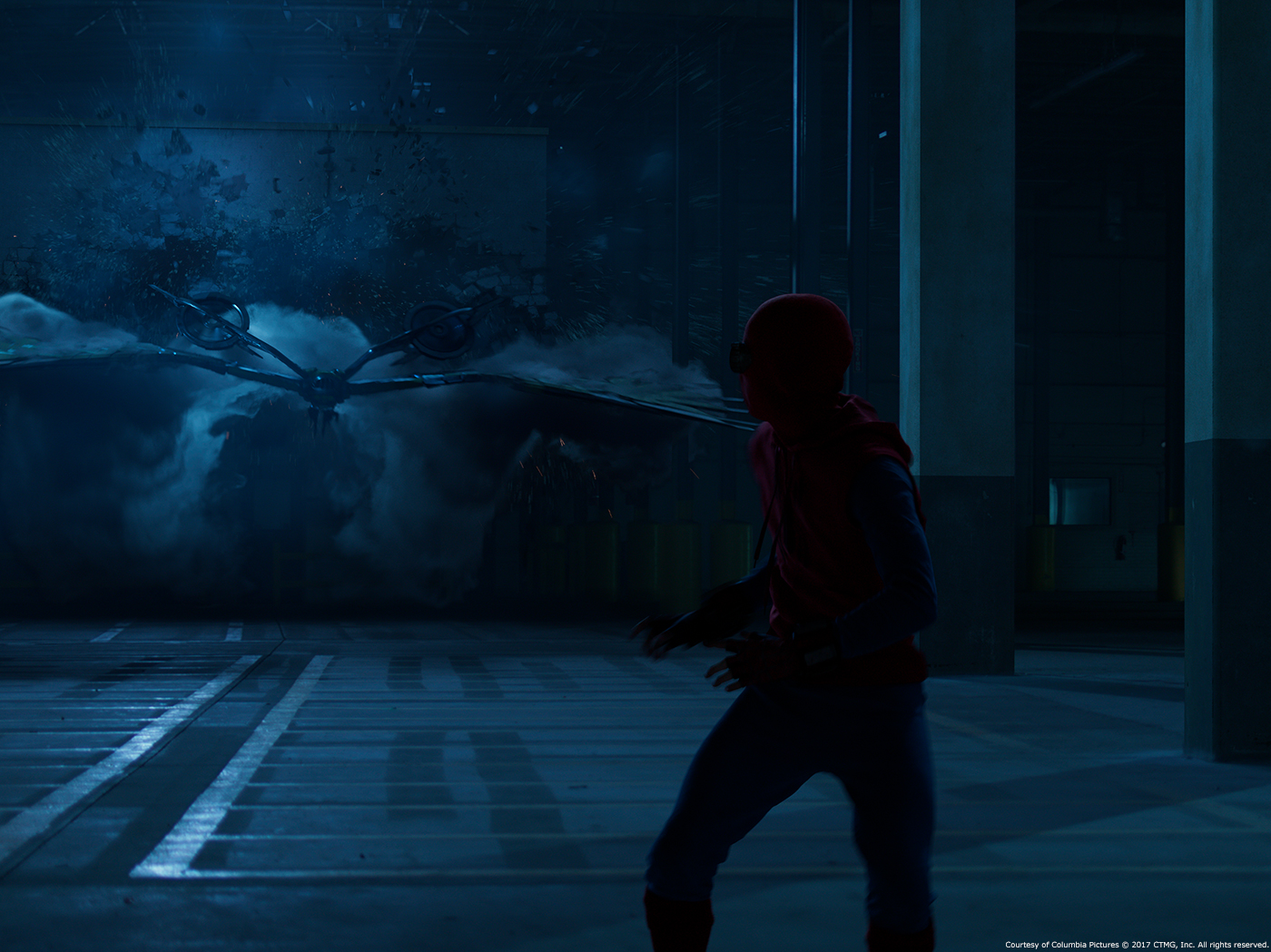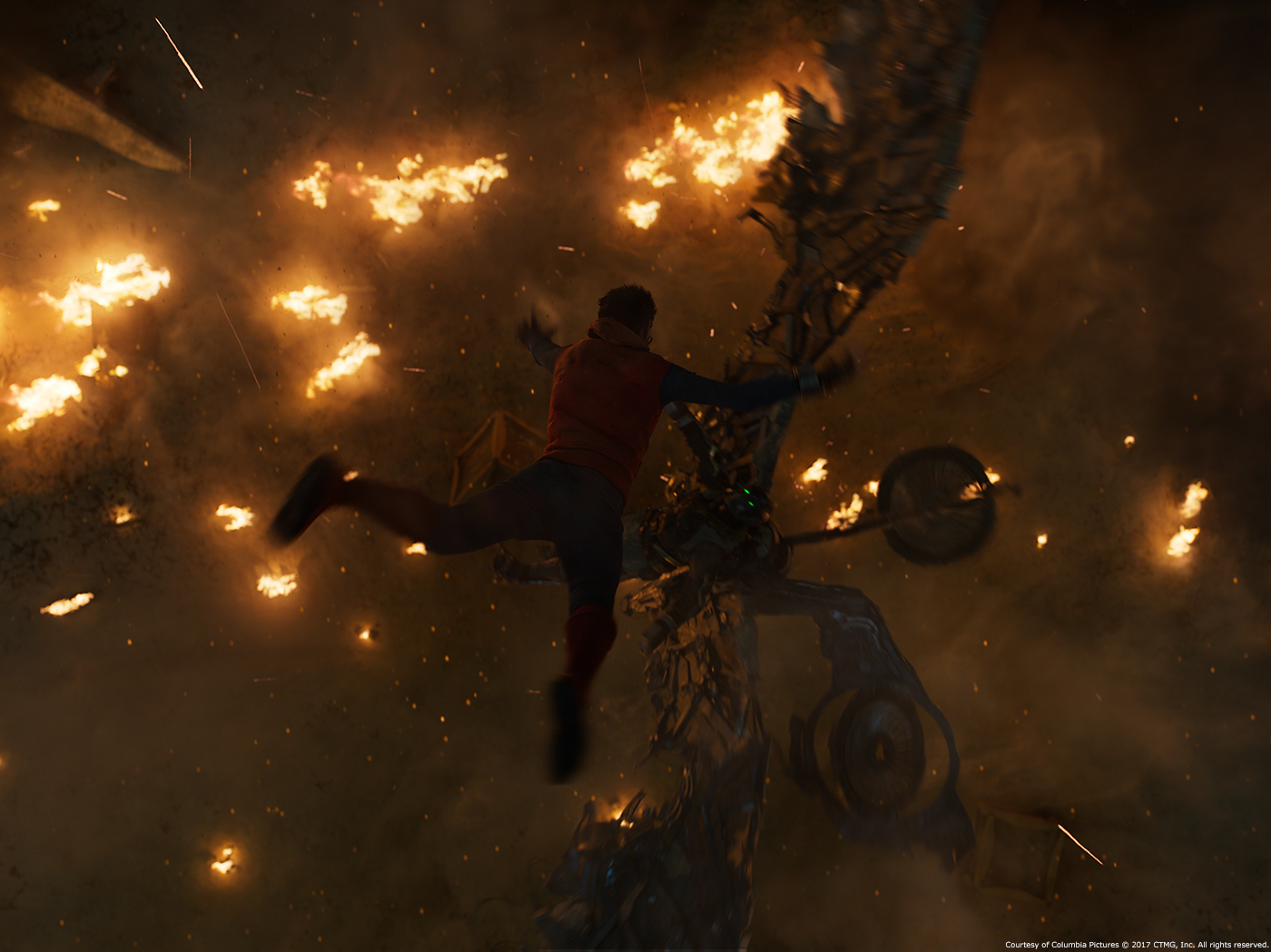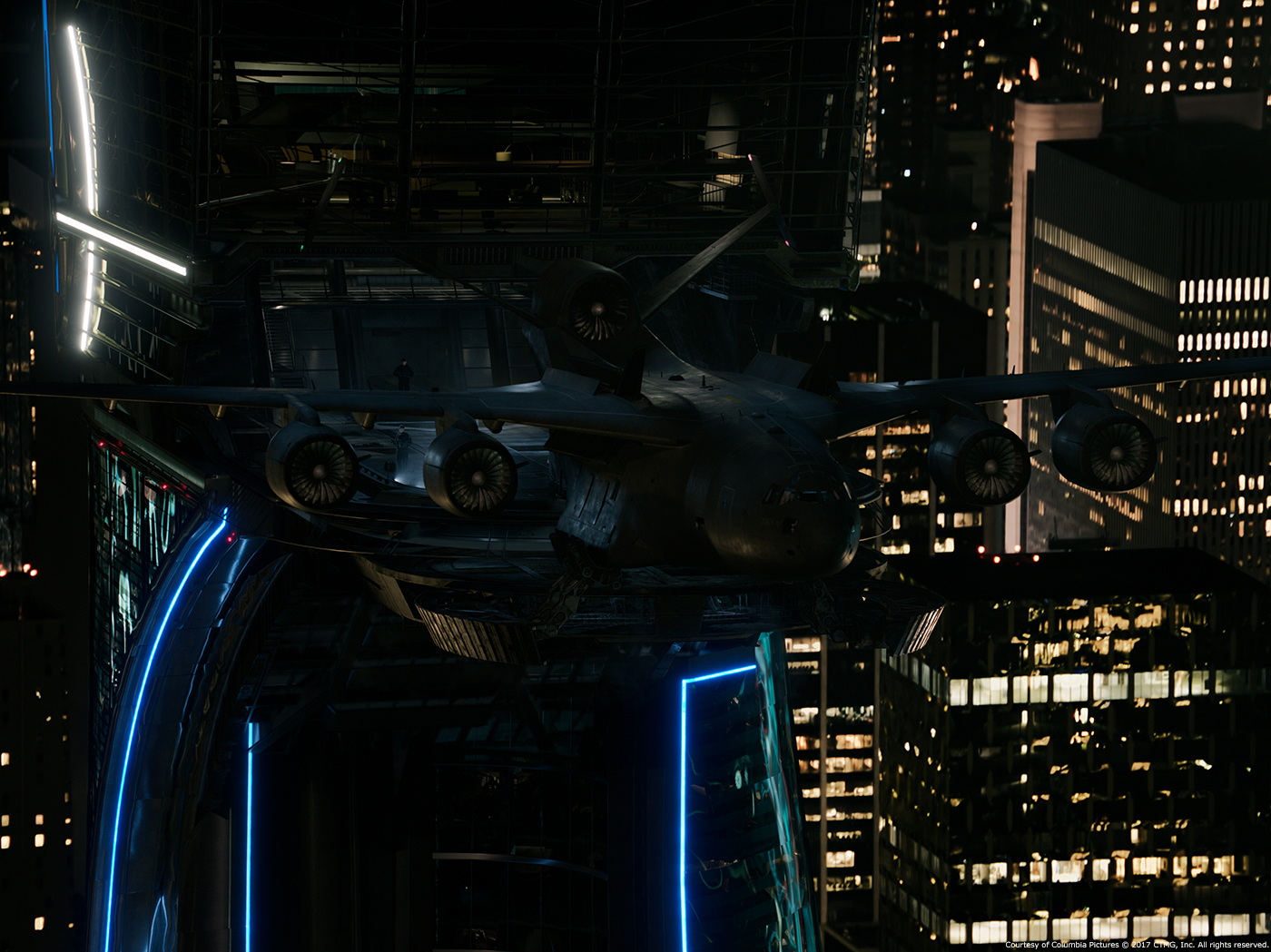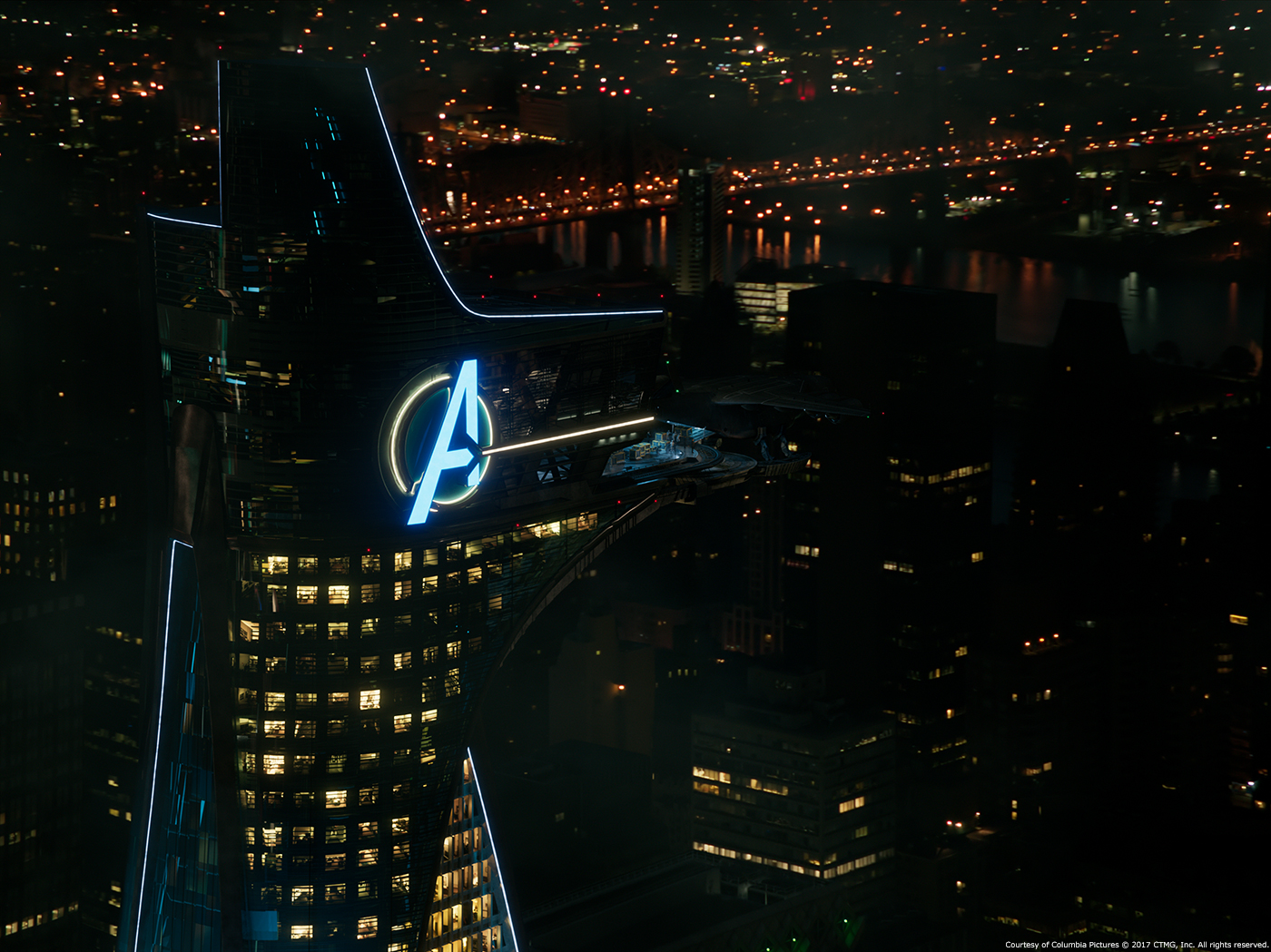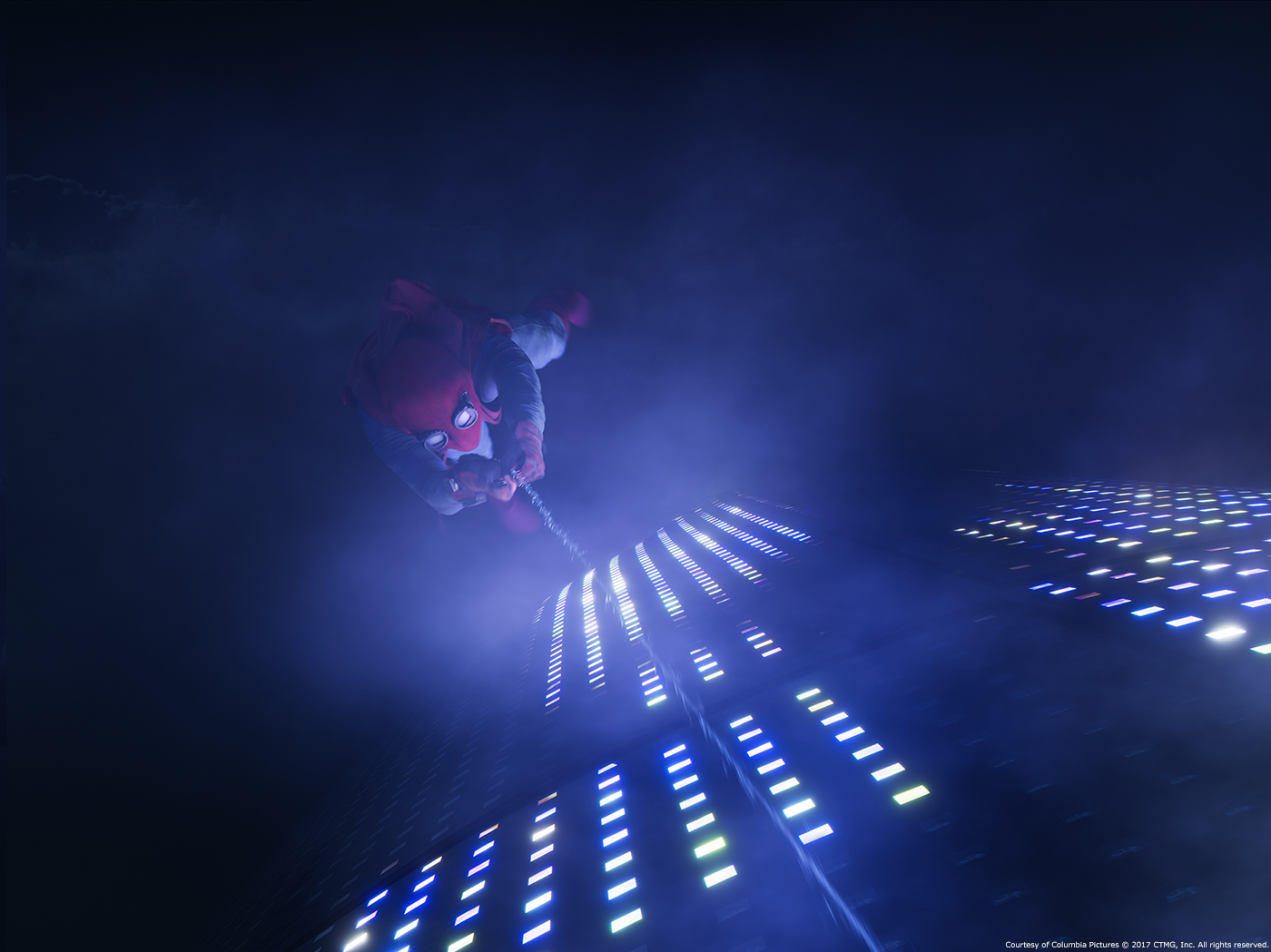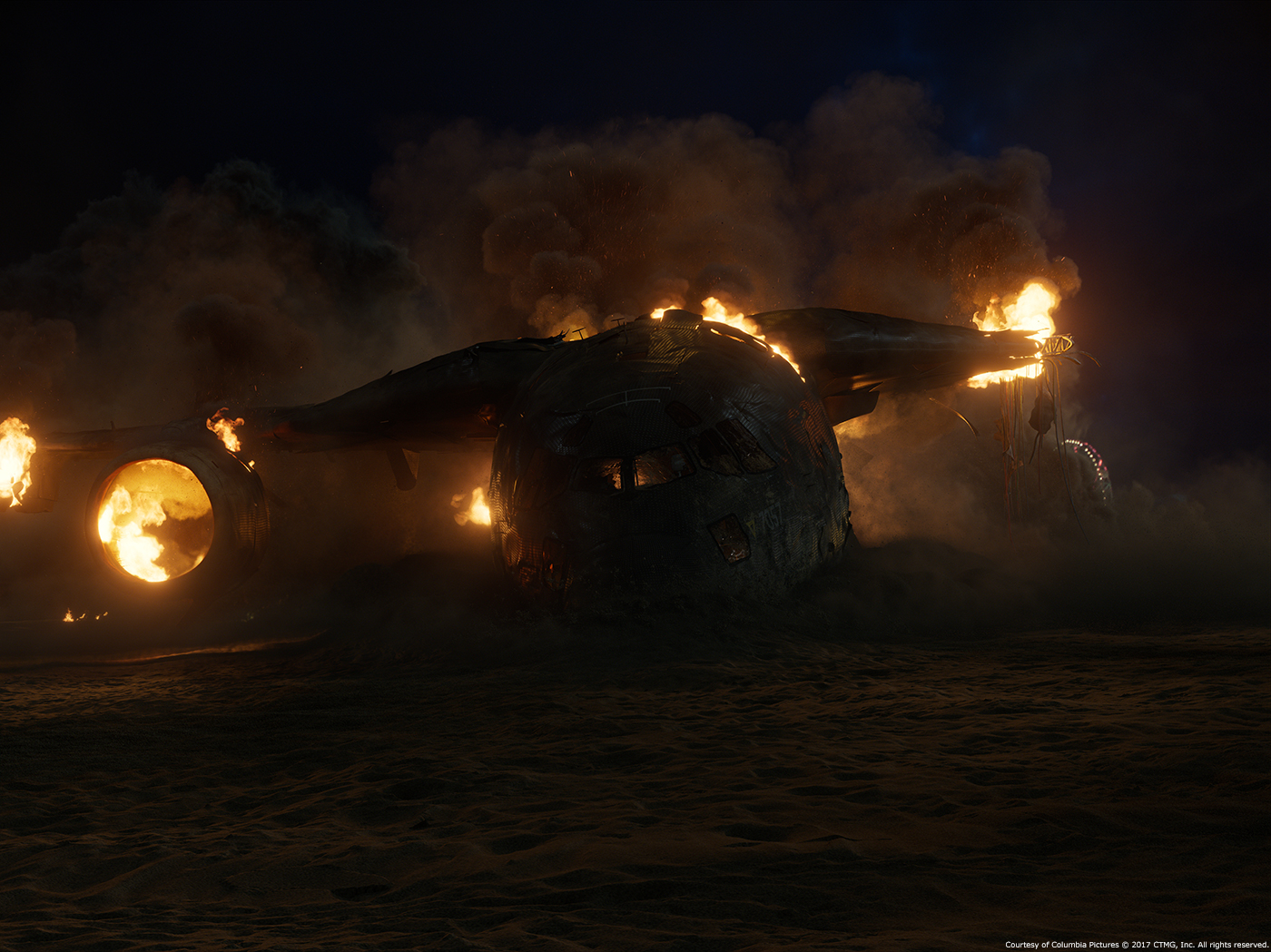Theodore Bialek has more than 20 years of experience in visual effects. At Sony Pictures Imageworks, he has worked on numerous projects such as STUART LITTLE, BEOWULF, SPEED RACER and ALICE IN WONDERLAND.
What is your background?
I originally studied Computer Engineering and Computer Science at RIT (Rochester Institute of Technology) before modifying my degree to be a hybrid of disciplines, focusing on the Arts toward the later half. Before leaving school for the West Coast I studied Industrial and Graphic Design. My first internship was at a Post Production facility in Rochester, NY. I also spent some time at an Architectural firm before heading to Los Angeles to work in films.
What was your feeling to be back in the SPIDER-MAN universe?
Honored. We’ve had the privilege of working on all of the SPIDER-MAN films and to have a chance to maintain that tradition was a responsibility everyone here took very seriously.
How was the collaboration with director Jon Watts and VFX Supervisor Janek Sirrs?
Amazing. Both Jon and Janek were excellent partners. From the onset they made it clear they were looking for collaborators, people who would take on the challenge and bring ideas to the table. Throughout the filming and the resulting post production process they actively encouraged feedback and ideas from our team.
What was their approaches and expectations about the visual effects?
Keep it relatable and grounded. It should all look cool of course, but never lose sight that the story and our characters should remain front and center. With the prospect of an invisible plane and characters possessing superhero abilities this wasn’t always as easy as it seems. Once we mastered dialing back the performances to a more accessible level we focused the embellishments based on reference: military grade IR cloaking, people jumping over speeding cars, daredevils flying jet packs in Dubai, every bit of real-world applicable reference was sourced for inspiration.
What are the sequences made by Imageworks?
The 3rd act in the film was primarily completed by Imageworks. This includes Spider-Man confronting Vulture in a warehouse, a battle on the outside of the Stark transport plane and the final battle on the beach at the end of the film.
How did you organize the work at Imageworks?
Both the assets and the shot work were done utilizing a department based workflow. In the past we’ve often broken up the work as sequences and assigned CG supervisors to specific blocks of like-shots, however, on our film the supervisors were instead managing individual departments. As is typical we start with our assets, this is where characters and environments are constructed. During this stage Modeling, Texturing, Rigging, CFX (Cloth/Hair Simulations), FX and Lookdev departments work in tandem to create the common elements and workflows that will be sourced later for shot production. Once shot work commences we follow a fairly serial workflow, starting with plate photography and progressing all the way through each department until the final composite is completed. The typical shot would pass through Matchmove, Paint/Roto, Precomp, Layout, Animation, CFX, FX, Matte Painting, Lighting, and finishing with Composting. Though we try to adhere to a logical workflow and complete the animation before we begin lighting, it is not uncommon on our first few shots to progress in parallel till we arrive at a look. Once we have key shots approved the more derivative based shots proceed with in a serial fashion. All three main sequences were worked on in parallel, though as a general rule of thumb we found ourselves working in a more chronological order as was the natural flow of the available turnovers from our client.
How did you used your previous experience on the SPIDER-MAN movies for this new one?
I knew from past experience that the animation would be the most challenging aspect of our sequences. Anytime you’re dealing with a human character that posses inhuman abilities maintaining realism becomes an elusive goal. We spent considerable resources throughout the production heavily focused on the performances, utilizing reference, traditional mocap and our own in-house performance capture whenever possible.
Can you explain in detail about the creation of Spider-Man and Vulture?
Imageworks was tasked with the build of the Homemade Spider-Man Suit. That’s his sweatsuit based costume that makes an appearance later in the film. They filmed sequences with a practical suit so we had excellent reference in-camera and were also provided a physical version of the costume to aid in our digital build. Extensive body and face scanning were done on Tom Holland, multiple photo-shoot sessions and mocap were acquired. Using the scans of Tom we were able to create an incredibly accurate model in Maya as a foundation under the suit. Marvelous Designer software was used to help construct our digital suit, ensuring an accurate panel layout for all of the cloth. Rigging completed in Maya using proprietary add-ons, with the muscles being a combination of expression, jiggle and hand animated controls. Cloth was simulated using a combination of Maya’s nCloth and custom tool-sets.
Vulture has two wing suits in the film, Mark I and Mark II. The clothing part of his costume including the helmet were shared between the two Mark I and II versions, only the wings themselves differed. The Mark II Wings were meant to be a more advanced second generation suit, heavier and more menacing. Imageworks worked on the Mark II suit exclusively, which is introduced in the third act of the film. We utilized scans of Michael Keaton and the pieces of his costume that were built for in-camera use. This included his helmet, exoskeleton armatures that framed his limbs and his clothing. The large mechanical wings were built in Maya based off of scans of a smaller scaled maquette and artwork. The goal for his wing suit was to construct it in a way to ensure it could move in a mechanically realistic manner. This meant avoiding doing bend deformers and required all of the pieces to retract and slide into position.
Can you tell us more about the animation of Vulture in the air?
We knew from the onset that motion capture wasn’t going to be an option for aiding us in the creation of Vulture’s animation. Given the suit’s modes of power and lift there just wasn’t going to be a way to recreate anything on stage that remotely resembled it’s intended feel. This left us somewhat unencumbered and free to indulge in many ideas. We naturally took a look at real vulture flight and condors to see if there was anything we could imbue into our character from avian flight. In reality there’s little in common our mechanized wing suit has with birds, so aside from the silhouette we played up in a few shots there was little gained with this exercise. Though I did learn quite a bit about Vultures and their peculiar habits. For example, when threatened after gorging on carrion, Vultures are known to rapidly vomit in order to lighten their load for a quick escape.
In search of all relevant reference we looked to gliders, skydiving, extreme parachute competitions, squirrel wingsuits, water jet packs and actual functioning jet packs. Sourcing this reference along with other VTOL based vehicles we began to get a sense of the types of movements our villain would emulate. Creating a sense of weight was key. Generally this is an easy concept to grasp, as heavier things move and change direction slowly, but given some of the quick combat and performances needed in our film, it wasn’t always an easy problem to solve for our Vulture.
Did you received specific indications and references for their animations?
I’ve highlighted reference we looked to for inspiration above. A main goal the filmmakers were focused on was making sure Vulture differentiated his flight from that of past Marvel characters. Specifically Vulture was meant to be different from the quicker and more nimble Falcon and Iron Man.
How the night affects your lighting work?
For the warehouse exterior scenes the night shots were standard matches to the plate photography and reference we acquired on location. Things got more interesting for the plane sequence where we were trying to recreate higher elevation scenes flying above the the clouds. What you’d film at night just wouldn’t be that interesting. Typically you’d shoot at dawn or dusk when the available light would still allow for some detail to read and then retime your plates cooler and darker to feel like night. This is how we initially approached the lighting on our end as well. Matching our CG to reference plates and then retiming it to feel like night. We constantly adjusted our look, both in color and luminosity back and forth from muted realism to higher contrast. Eventually we settled on a higher contrast bias to ensure our characters and foreground remained the focal point.
Can you tell us more about the various web lines of Spider-Man?
Imageworks shots used Spider-Man’s traditional web lines, the more exotic web abilities were earlier in the film and were completed by other vendors. For our shots we were matching to supplied reference from the CIVIL WAR Avengers film.
The first part of the sequence happens over New York. Can you explain in detail about the creation of this massive environment?
Imageworks recreated portions of Coney Island and the Boardwalk along its beach. This environment was featured toward the end of the plane sequence and during the beach battle. We acquired the beach, boardwalk and surrounding neighborhoods using a combination of FARO scanning, photography and photogrammetry. We mapped out the area beforehand, securing permits to setup our scanner atop rooftops, lifts, and along the beach. The entire process took a week, but by the end we had a detailed scan of the area that was used to build out the flightpath our VTOL.
Can you tell us more about the Stark Tower creation?
We were supplied limited assets from ILM for AVENGERS Tower from a previous film. This included a model and previously approved turntable renders as reference. Given our different rendering requirements these assets were useful as a loose guide. Given a look was already established our Asset Teams were able to quickly recreate the building for our shots.
The Stark plane is using a stealth device. How did you design and created this beautiful effect?
The goal was to design an effect that would be achievable with today’s technology. Sourcing current military-grade Infrared cloaking technology and relevant commercial applications of flexible LED screens we arrived at the look for our plane. Not unlike cameras that currently exist on many modern cars or VR cameras we first create a 360 degree image of the environment from the perspective of the plane. This footage is then recreated on the surface of the plane through millions of LEDs that are arranged on molded panels. The system is only intended to be effective when viewed from a distance and vantage point that a plane would be typically observed at. The limitations of the technology was intentional on the part of the filmmakers to keep the plane more relatable and help lend believability to our hero’s predicament. When the panels are damaged over the course of the battle the LED’s begin to flicker and short out, allowing for some unique and frantic scenes.
Can you tell us more about the fight on the plane and the challenge with the high speed?
The challenge with recreating a realistic interpretation of the someone holding on to a plane moving in excess of 500 mph is that its innately unrealistic to expect even a superhero to do much more just hold on before they’re ripped off into the air. Just having Spider-Man stuck to the plane like a bug on your windshield wouldn’t make for much of sequence either, so clearly a balance of what’s realistic and what’s engaging needed to be found. A highly acrobatic fight just wasn’t going to be an option so eventually we found the sequence played out best as more of a controlled fall as Vulture advances toward Spider-Man. Once Vulture lands on the plane even he’s subject to the extreme drag and wind. Every time Vulture would lift his wing we’d play up the air current with it literally tearing Vulture off the plane, requiring him to quickly lash out at the surface in order maintain some semblance of purchase and control.
What is your best memory on this show?
During the asset creation stage we sent over an early render test of our CG Spider-Man character. We had entirely recreated, in CG, the room where they had done the photo acquisitions of Tom Holland, down to the random clamps and cords on the ground. In this test render we applied mocap of a calisthenics range of motion Tom had performed. Upon showing it, some of the initial responses were, “Why are you showing us test footage?” To have our team create something that was good enough to blur the line between CG and real was a huge success for our team!
How long have you worked on this show?
Around a year and a half.
What is your VFX shots count?
Just over 300 shots.
What was the size of your team?
We peaked at around 200 people.
What is your next project?
Vacation!
What are the four movies that gave you the passion for cinema?
The first movie I saw that really opened my eyes in terms of recognizing film as an art form was A TOUCH OF EVIL. It was such a beautifully shot film, it was that “ah ha” moment for me, when I began to appreciate the language of film. JURASSIC PARK was the first film where CG created a genuine suspension of disbelief for me as a viewer. From this point onward it was clear to me that just about anything would eventually be possible. Two years later TOY STORY was released and it was the first all CG film that set the benchmark in animated features we’ve been building off of ever since. Though our software technology and computers have advanced in orders of magnitude the film still holds up against modern popular favorites, a testament to the story and characters Pixar crafted. The recently released THE JUNGLE BOOK was an astounding feat of ingenuity, I was completely humbled by the artistry and work that was required to complete that film in regards to the visual effects. I found many of the animated performances to be inspiring.
A big thanks for your time.
// WANT TO KNOW MORE?
Sony Pictures Imageworks: Dedicated page about SPIDER-MAN: HOMECOMING on Sony Pictures Imageworks website.
© Vincent Frei – The Art of VFX – 2017


